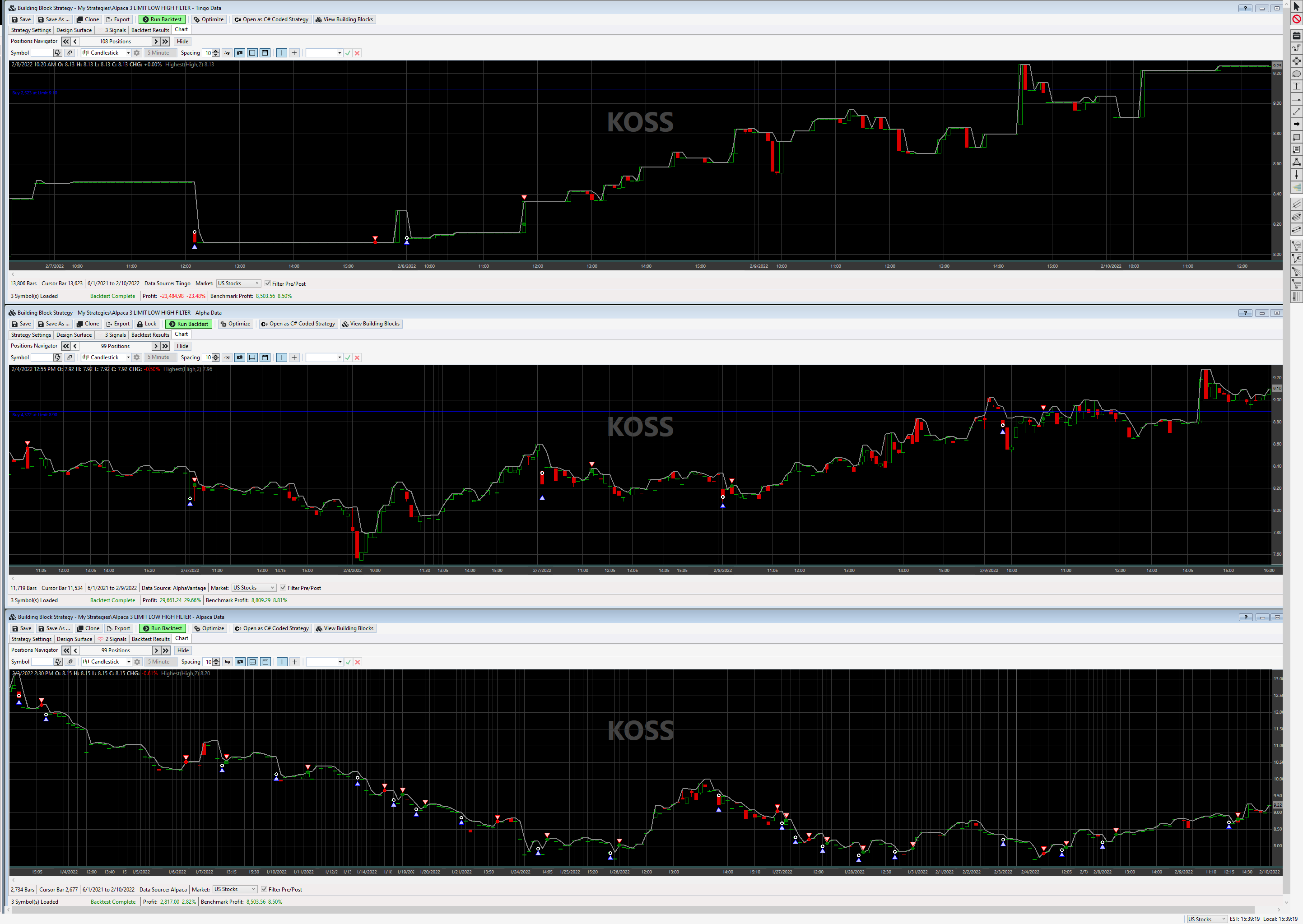I am currently backtesting a strategy and decided to compare the results using 3 different data providers. Here's what I found:
1) AlphaVantage: 29% profit, 11,719 bars, 360 positions (0 NSF)
2) Alpaca: 2% profit, 2734 bars, 241 positions (0 NSF)
3) Tiingo: -23% profit, 13,806 bars, 346 positions (0 NSF)
What could be the reason that I'm seeing such great discrepancy between these 3 data providers?

1) AlphaVantage: 29% profit, 11,719 bars, 360 positions (0 NSF)
2) Alpaca: 2% profit, 2734 bars, 241 positions (0 NSF)
3) Tiingo: -23% profit, 13,806 bars, 346 positions (0 NSF)
What could be the reason that I'm seeing such great discrepancy between these 3 data providers?

Rename
You get what you pay for? These are all free sources, for any serious intraday backtesting I’d use something like IQFeed.
There is the finantic.BestData provider
https://www.wealth-lab.com/extension/detail/finantic.BestData
This combines several data sources and creates data with a very low error rate.
https://www.wealth-lab.com/extension/detail/finantic.BestData
This combines several data sources and creates data with a very low error rate.
Interesting, thanks for the responses. I didn't realize these free providers were potentially so unreliable. I'll definitely investigate paid options.
Of the 3 you showed it looks like AlphaVantage is the only remotely viable one, too bad it has such stringent restrictions on the free plan. TD Ameritrade also looks of similar quality to AlphaVantage on KOSS.
Tiingo's intraday data are not incorrect but simply different. It solely represents the trades that take place on the IEX Exchange, not on the major market exchanges.
https://en.wikipedia.org/wiki/IEX
https://en.wikipedia.org/wiki/IEX
Thank you for the clarification, Eugene. This is related to something I've been thinking about. If the data from a particular data provider (Tiingo in this case) is simply "different", but it's different in a consistent way, then it should be suitable for backtesting and optimizing a functional strategy. But when it comes time to run the strategy live, can I safely use Tiingo as the data provider if the broker that's executing my trades is using a different exchange, and therefore has "different" historical data?
My assumption here, going solely off intuition, is that it should be fine, and that any differences in buy/sell execution will be trivial. But I'd feel better hearing what you guys have to say.
EDIT: However, would there potentially be issues with buy/sell conditions triggering differently in the live trading scenario than in the backtest? Maybe there's a stop/limit block looking for large swings that are more pronounced on IEX (Tiingo), but less pronounced on the exchange where the strategy is run for live trading.
My assumption here, going solely off intuition, is that it should be fine, and that any differences in buy/sell execution will be trivial. But I'd feel better hearing what you guys have to say.
EDIT: However, would there potentially be issues with buy/sell conditions triggering differently in the live trading scenario than in the backtest? Maybe there's a stop/limit block looking for large swings that are more pronounced on IEX (Tiingo), but less pronounced on the exchange where the strategy is run for live trading.
With all respect, the IEX is in charge of 2.749% of the market share today (and its historic record was 3.371%):
https://iextrading.com/stats/
So when it comes to order execution, for most but very liquid instruments I'd expect some difference with the major market (NYSE etc.)
https://iextrading.com/stats/
So when it comes to order execution, for most but very liquid instruments I'd expect some difference with the major market (NYSE etc.)
Your Response
Post
Edit Post
Login is required